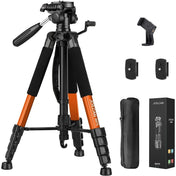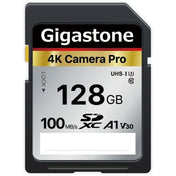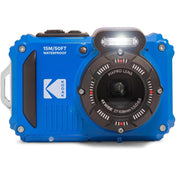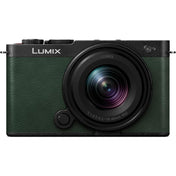When it comes to photography, the camera lens is one of the most crucial components that can significantly impact the quality of your images. While many enthusiasts focus on camera bodies, understanding camera lenses is essential for any photographer looking to elevate their skills. In this article, we will explore the different types of camera lenses, their specific uses, and how they can help you achieve stunning results. Whether you are a beginner or a seasoned professional, this guide will provide invaluable insights into camera lenses.
Why Are Camera Lenses Important?
The camera lens is often referred to as the "eye" of the camera. It influences the way light enters the camera, how images are captured, and the overall mood of your photos. A good lens can make even a simple snapshot look professional, while a subpar lens can diminish the quality of your work significantly. Understanding lenses will help you choose the right one for your photography style, leading to better images and a more satisfying creative process.
Types of Camera Lenses
Camera lenses come in various types, each serving different photographic purposes. Below, we dissect the most common types of lenses and their functionalities:
Zoom Lenses
Zoom lenses are highly versatile and can cover a range of focal lengths, making them ideal for various photography styles. With a zoom lens, you can capture wide-angle landscapes and closer portraits without changing lenses. This versatility is particularly useful for travel photographers who may not want to carry multiple lenses. They usually come in two categories:
- Standard Zoom: These lenses typically range from 18-55mm and are perfect for everyday photography.
- Telephoto Zoom: Offering focal lengths of 70mm to 300mm or more, these lenses are great for wildlife or sports photography.
Prime Lenses
Unlike zoom lenses, prime lenses have a fixed focal length, which means they can’t zoom in and out. However, this limitation often results in superior image quality, sharper focus, and larger apertures, allowing you to shoot in lower light conditions. Common prime lens focal lengths include:
- 35mm: Ideal for street photography and portraits
- 50mm: Often referred to as the "nifty fifty" for its versatility
- 85mm: Perfect for portrait photography with beautiful bokeh effects
Wide-angle Lenses
Wide-angle lenses allow photographers to capture expansive scenes, making them excellent for landscape photography, architectural photography, and group pictures. Generally, these lenses have a focal length of 24mm or less. They are known for their ability to create a sense of space and depth in images, thanks to their broader field of view.
Telephoto Lenses
Telephoto lenses are specially designed to magnify distant subjects, making them perfect for wildlife and sports photography where you may need to shoot from a distance. With focal lengths starting at 70mm and going up to 300mm or more, telephoto lenses compress space, bringing far-away subjects closer and creating stunning visual effects.
Macro Lenses
Macro lenses are designed for extreme close-up photography. With a macro lens, you can capture tiny details, like the delicate petals of a flower or the intricate patterns of an insect. These lenses usually have a 1:1 reproduction ratio, meaning that the subject is captured at its actual size on your camera’s sensor.
Fisheye Lenses
Fisheye lenses are a type of ultra-wide-angle lens that creates a distinctive spherical distortion in images. These lenses are unique in capturing intense perspective and can be particularly effective for creative photography, offering quirky and abstract compositions.
Understanding Lens Specifications
To make an informed decision when purchasing a lens, you need to familiarize yourself with several important specifications:
Aperture
The aperture of a lens is measured in f-stops (e.g., f/2.8, f/4). A lower f-stop number means a larger opening, allowing more light to enter the lens, which is beneficial for low-light photography and achieving a shallow depth of field. Higher f-stop numbers indicate a smaller aperture, resulting in a greater depth of field, which is essential for landscape photography.
Focal Length
Focal length, measured in millimeters (mm), determines the lens' angle of view and how zoomed in or out the subject appears. Understanding focal lengths helps you select the right lens for your specific needs, whether capturing vast landscapes or distant wildlife.
Image Stabilization
Some lenses come equipped with built-in image stabilization, which helps reduce blur caused by camera shake, especially at slower shutter speeds. This feature is particularly beneficial for handheld shooting and low-light conditions.
Choosing the Right Lens for Your Needs
Selecting the right lens depends on your photography goals, budget, and style. Here are some considerations to help you make a choice:
Consider Your Photography Styles
Think about what types of photography you're most interested in. If you enjoy taking portraits, a prime lens with a wide aperture such as an 85mm may be the best choice. For landscapes, a wide-angle lens will allow you to capture vibrant, expansive vistas. Meanwhile, wildlife photographers would benefit greatly from a telephoto zoom lens.
Evaluate Your Budget
High-quality lenses can be a significant investment, but they are worth it if you’re serious about improving your photography. Don't forget to consider the value of investing in a dependable lens that fits your needs rather than opting for cheaper alternatives that may compromise quality.
Test Before You Buy
If possible, try out various lenses at local camera shops or rental services to assess how they feel in your hands and how they handle during use. Testing the lenses will give you a better idea of their functionalities and how they work for your photography style.
Maintaining Your Lenses
Proper care and maintenance of your lenses are crucial for extending their lifespan and maintaining image quality. Here are some tips:
- Regularly Clean the Glass: Use a microfiber cloth and lens cleaner to remove smudges and dust without scratching the surface.
- Store Carefully: Keep your lenses in a protective case when not in use, like the Nikon CF-DC2 Case, to guard against impacts and environmental dust.
- Use Lens Caps: Always use lens caps to protect your lenses from scratches and dirt when they're not attached to your camera.
Frequently Asked Questions About Camera Lenses
What lens should I buy as a beginner?
As a beginner, a standard zoom lens (18-55mm) is a great choice. It offers versatility for various photography styles, making it easier for you to explore and develop your skills.
Can I use any lens on my camera?
Not all lenses are interchangeable; it depends on your camera’s mount system. Make sure to choose lenses that are compatible with your camera brand and model.
Do I need to invest in expensive lenses?
While expensive lenses often offer better quality and features, there are plenty of budget-friendly options that can yield great results. It’s important to balance your budget with your needs and photography goals.
Final Thoughts: Unleash Your Creative Potential!
Understanding camera lenses and their various types opens up a world of creative possibilities for your photography. Whether you're looking to capture breathtaking landscapes, stunning portraits, or intricate macro details, there's a lens for every challenge. As you explore photography, investing time in the right lenses and learning how to use them will undoubtedly improve your skills. So, equip yourself with the knowledge of camera lenses, and start capturing those memorable moments today!











